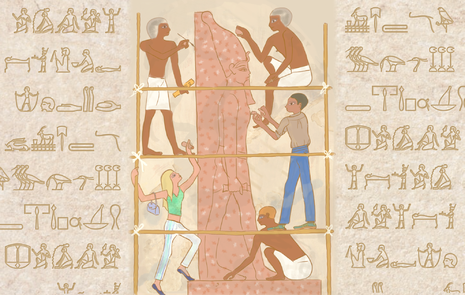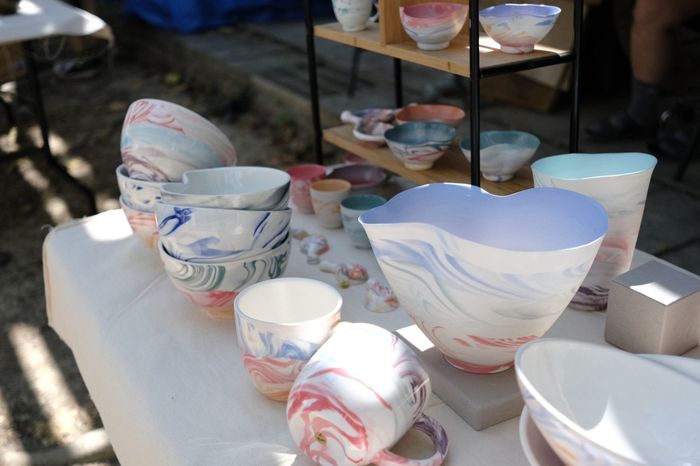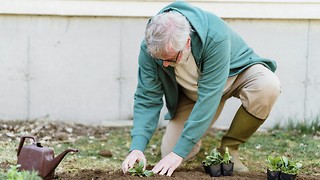The Fitzwilliam’s first-ever charged exhibition is worth every penny
Talking with the curator of ‘Made in Ancient Egypt’ Sophie Smout argues that the fee shouldn’t put you off

“The exhibition is about people who don’t really get a lot of attention.” Helen Strudwick, the Fitzwilliam Museum’s Senior Curator for the Ancient Nile Valley, told me in conversation about their upcoming exhibition, Made in Ancient Egypt. “Those are the people who made the objects that we see often in museums: the people who made the furniture, the wall carvings, amazing objects … made of faience, made of glass, made of bronze.” She speaks with open enthusiasm, clearly eager for the world to see what she and her team have been working on for the last 17 months.
While the exhibition was only greenlit in March 2024, it “builds on years of research that the Fitzwilliam has been doing”, with foundations laid by the museum’s first keeper of Antiquities in the 1980s. Janine Bourriau was “one of the driving forces in the understanding of pottery through its material rather than just the shape.” Her work complemented Alfred Lucas, conservator of the objects from the tomb of Tutankhamun. Lucas’s approach, unique in the 1920s, centralised the materials and creation processes of an object. From there, the method expanded to investigate the ordinary people who made such objects: these are, at long last, the focus of this exhibition.
“The method expanded to investigate the ordinary people who made such objects: these are, at long last, the focus of this exhibition”
The exhibit has caused a wave of excitement among curators and visitors alike. “Once you start pointing out: “Look, there’s a fingerprint there” they’ll often respond, “oh wow!”, which is a much more visceral connection than a cerebral one … And that’s what we want,” Helen explained. Yet this exhibition is also unique for introducing the museum’s first fee for visitors, who will be charged £14.50 to view the exhibition. Even at its size, the Fitzwilliam Museum has a long-standing tradition of free entry and exhibitions. “It’s been a heart-rending thing to do,” confessed Helen. “We’ve always been proud … that all our exhibitions are free, but it’s a reality we’ve just got to face now, unfortunately.” While general entry and temporary displays will remain free for the foreseeable future, it seems that future exhibitions will also carry a charge. “We want to do complex exhibitions like this, and at the moment, we do. But I’m afraid that [charging] is unfortunately the way it’s going to have to be.” But what caused this cost, and is it worth paying on a student budget?
What first sets this exhibition apart is the scale. ‘Made in Ancient Egypt’ comprises three large galleries, all of which have running costs including maintaining safe temperatures, lighting, and visitor-assisting staff. Additionally, comparing this exhibition to her 2016 ‘Death on the Nile’ exhibition, Helen noted that “there’s now a much, much bigger team.” The museum hires designers and project managers in addition to curators. Coupled with a 20% decrease in arts funding for the Cambridge area between 2017 and 2022, it seems inevitable that an exhibition of this scale needs additional support from its visitors.
“In addition to its unique focus, interactivity, and expansive loans, the exhibition excitingly avoids the historic approach”
Secondly, Helen highlighted one crucial behind-the-scenes element: transportation. “All the costs have gone up massively, [like] air freight,” she explained. “Any manufacturer will tell you in this country that the cost of transporting stuff around is vastly more expensive.” While most objects are from the Fitzwilliam’s more than 500,000 items, further antiquities have been loaned from seven UK museums, Berlin, Leiden, and France. “Everybody’s been incredibly generous,” said Helen, “all the Egyptologists that I’ve been contacting about the exhibition have been so excited.” With so many delicate objects travelling up to 1,000 km, it’s no wonder that there have been high transportation costs in addition to the cost of the loans themselves. Despite this, these objects are necessary to include. Speaking about a large stela from the Louvre, Helen said there are only “a handful of texts that cover anything like the same ground, so it’s very much an object that is obvious to have in an exhibition like this, because it represents this person as a maker, very, very clearly.” When I asked what caused the rise in costs, suggesting Brexit or Covid-19, Helen agreed. “I think both have contributed … There was an enormous hike in the cost of things post-Covid immediately, and I don’t think Brexit has helped either. So, all our costs have gone up.”
Finally, this exhibition required cutting-edge research, wherein the conservators took “a very practical approach to understanding how objects were made by going on courses to learn … for example, bronze-making” with replicas of ancient tools. Helen said, “until you’ve actually done it for yourself, you don’t know how it works.” The Fitzwilliam first used these techniques in a 2016 workshop, which one of Helen’s colleagues said was “transformative to his approach to understanding each object.” While this level of visitor involvement is not possible at the scale of this exhibition, the team are still encouraging visitors to get involved. “There is a family trail, which is based around saying people’s names aloud … [because] the ancient Egyptians wanted their names to live forever”, as well as the opportunity for visitors to recreate ancient sketches, weave basketry, and a bow drill which you can “pull back and get a sense of the tension.” Since they are so pioneering, these techniques and materials cost the museum extra time and money.
“I find the small ticket price for this exhibition to be entirely justifiable and worthwhile”
So, why pay for the exhibit instead of visiting the free Ancient Egyptian gallery? In addition to its unique focus, interactivity, and expansive loans, the exhibition excitingly avoids the historic approach. “It’s very much about the materials, the people. So, we’re not grouping things by era… we’re trying to avoid all that.” It seems like this will make the objects more accessible to those without knowledge of Egyptian history. Furthermore, one object temporarily relocated from the gallery to the exhibition has already attracted new attention. A 4,000-year-old handprint was discovered on the base in July, and the object “is upstairs in the exhibition already, with a mirror underneath so you can see the handprint.” Or, you could visit to support your fellow students: Helen credits volunteers, especially archaeology students, as a key part of the exhibition. “Anybody who’s been volunteering with me has inevitably been involved … I’ve just relentlessly picked people’s brains,” she revealed. One particular student, Hannah Eggleston, will be highlighted in the exhibition for her drawing, revealing a covered inscription. “The original and the new carving [are] in the same sort of clay … which is extremely confusing,” Helen explained, “So I got Hannah to trace over everything … which is great, really helpful.”
I find the small ticket price for this exhibition to be entirely justifiable and worthwhile. Truly, it’s a wonder that the Fitzwilliam Museum has been able to keep their exhibitions free until now, considering all of their growing costs. Students and young adults can get a free ticket by joining the ‘Fitz list’, and Helen’s hope is that we use these concessions so the exhibition “can shine some light on these rather overlooked people.”Made in Ancient Egypt tells “a story about people who I just always felt were incredible”: the makers of the objects we admire.
Made in Ancient Egypt is open at the Fitzwilliam Museum from the 3rd of October 2025 until the 12th of April 2026.
 News / Pembroke to convert listed office building into accom9 December 2025
News / Pembroke to convert listed office building into accom9 December 2025 News / Gov declares £31m bus investment for Cambridge8 December 2025
News / Gov declares £31m bus investment for Cambridge8 December 2025 Features / Searching for community in queer Cambridge10 December 2025
Features / Searching for community in queer Cambridge10 December 2025 News / Uni redundancy consultation ‘falls short of legal duties’, unions say6 December 2025
News / Uni redundancy consultation ‘falls short of legal duties’, unions say6 December 2025 Lifestyle / Into the groove, out of the club9 December 2025
Lifestyle / Into the groove, out of the club9 December 2025










